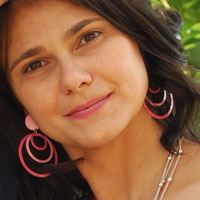Addressing Arm Non-Use During Early Recovery from Stroke
Related Experiments | Key Publications | Future Investigations | Noteworthy Equipment | Collaborators | Research Support
Stroke survivors often suffer from a loss of mobility or sensation on one side of their body. This results in survivors suppressing the use of their affected side, creating a debilitating cycle of favoring their good side while the injured side’s condition progressively worsens. Our interventions aim to break this cycle of “non-use” by using wearable devices to deliver haptic reminders to exercise their upper limbs. Wearable technology has the potential to deliver personalized rehabilitation solutions for patients both in the clinic and at home.
Related Experiments
At-Home Personalized Exercise System to Address Learned Non-Use
The NMCL is using wearable technology to monitor stroke survivor’s upper limb activity throughout their day. The wearable exercise system also cues participants to perform specified upper limb exercises. The system uses a custom smartphone application that allows for independent setup at-home by the participant and remote data monitoring by the researchers. This allows for analysis of activity levels throughout the day for each limb of the participant during their activities of daily living and during cued exercise periods. We are investigating the usability and utility of such a system to guide future developments and research projects.
Key Publications
Backus D, Bassindale K, Willingham B, Collier GH, Scheidt RA (2023) Sensors and Remote Monitoring in Clinical Care: A Glimpse at the Possibilities. American Congress of Rehabilitation Medicine, Atlanta GA.
McGuire J, Bassindale KD, Golus S, Sytsma M, Winkowski M, Morelli W, Scheidt RA (2023) Idle-time exercise: promoting more-involved arm use in the inpatient rehabilitation setting after stroke. American Congress of Rehabilitation Medicine, Atlanta GA.
Bassindale KD, Golus S, Sytsma M, Winkowski M, Morelli W, McGuire J, Scheidt RA (2023) Wearable Technology to Increase Activity During Idle-Time Post-Stroke: User Experience While Inpatient and At-Home. American Congress of Rehabilitation Medicine, Atlanta GA.
McGuire J, Bassindale KD, Golus S, Sytsma M, Winkoski M, Morelli W, Casadio M, Scheidt RA (2023) Potential benefits of idle-time exercise to promote more-involved arm use in the inpatient rehabilitation setting after stroke. Progress in Clinical Motor Control, Chicago, IL
Golus S, Bassindale KD, Scheidt RA, Sytsma M, Morelli W, Winkowski M, McGuire M (2023) Feasibility of implementing a wearable device system among survivors of stroke in the inpatient rehabilitation setting. Progress in Clinical Motor Control, Chicago, IL
Bassindale KD, Golus S, Sytsma M, Winkowski M, Morelli W, McGuire J, Scheidt RA (2023) Usability of a wearable technology system among survivors of stroke in the inpatient rehabilitation setting. Progress in Clinical Motor Control, Chicago, IL
Winkowski M, Scheidt RA, McGuire J, Bassindale KD, Golus S, Sytsma M, Morelli W (2023) Implementation of a remote rehabilitation program system for survivors of stroke into a free-standing rehabilitation hospital. Progress in Clinical Motor Control, Chicago, IL
Pomplun E, Stochino A, Mrotek LA, Ryan K, Agnew Sievers M, McGonigle E, Bucci F, Casadio M, Scheidt R, McGuire J (2021) Fashion-Forward Wearable Devices Addressing Post-Stroke Neglect—A Pilot Study of System Tolerance. Accepted American Physical Therapy Associate Combined Sections meeting.
Stochino, Alessio. “A smartphone application designed to guide exercises for improving limb awareness after stroke.” Master’s Thesis, Biomedical Engineering, Marquette University & University of Genoa (2020).
Bucci, Francesca. “User-centered design of a ubiquitous cueing wearable device to improve limb awareness after stroke.” Master’s Thesis, Biomedical Engineering, Marquette University & University of Genoa (2017).
Future Investigations
We aim to examine both short-term (inpatient clinic) and long-term (at home) recovery stages of stroke survivors with the wearable exercise system to understand the role of cued exercises in negating the effects of learned non-use.
Noteworthy Equipment
Collaborators
Not Pictured
Erin Corrigan
Ella Pomplun
Meghann Sytsma
Research Support
This work has been supported by a gift to the LaVerne L. Schwacher Endowed Fund for Stroke Research of the Stroke Rehabilitation Center (SRC) of Southeastern Wisconsin.

 Robert Scheidt, Ph.D.
Robert Scheidt, Ph.D. Kim Bassindale, PT, DPT
Kim Bassindale, PT, DPT John McGuire, M.D.
John McGuire, M.D. Maura Casadio, Ph.D.
Maura Casadio, Ph.D.